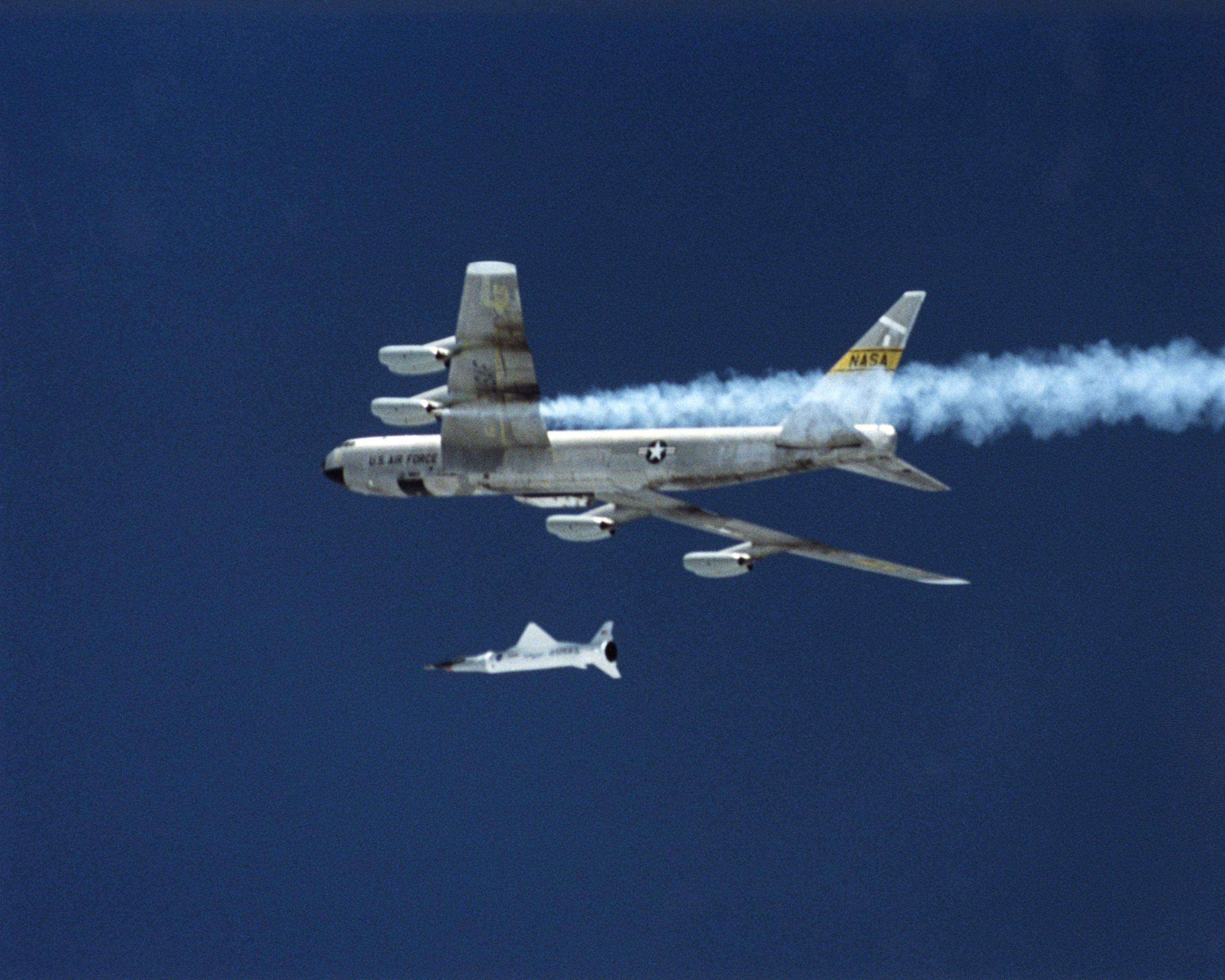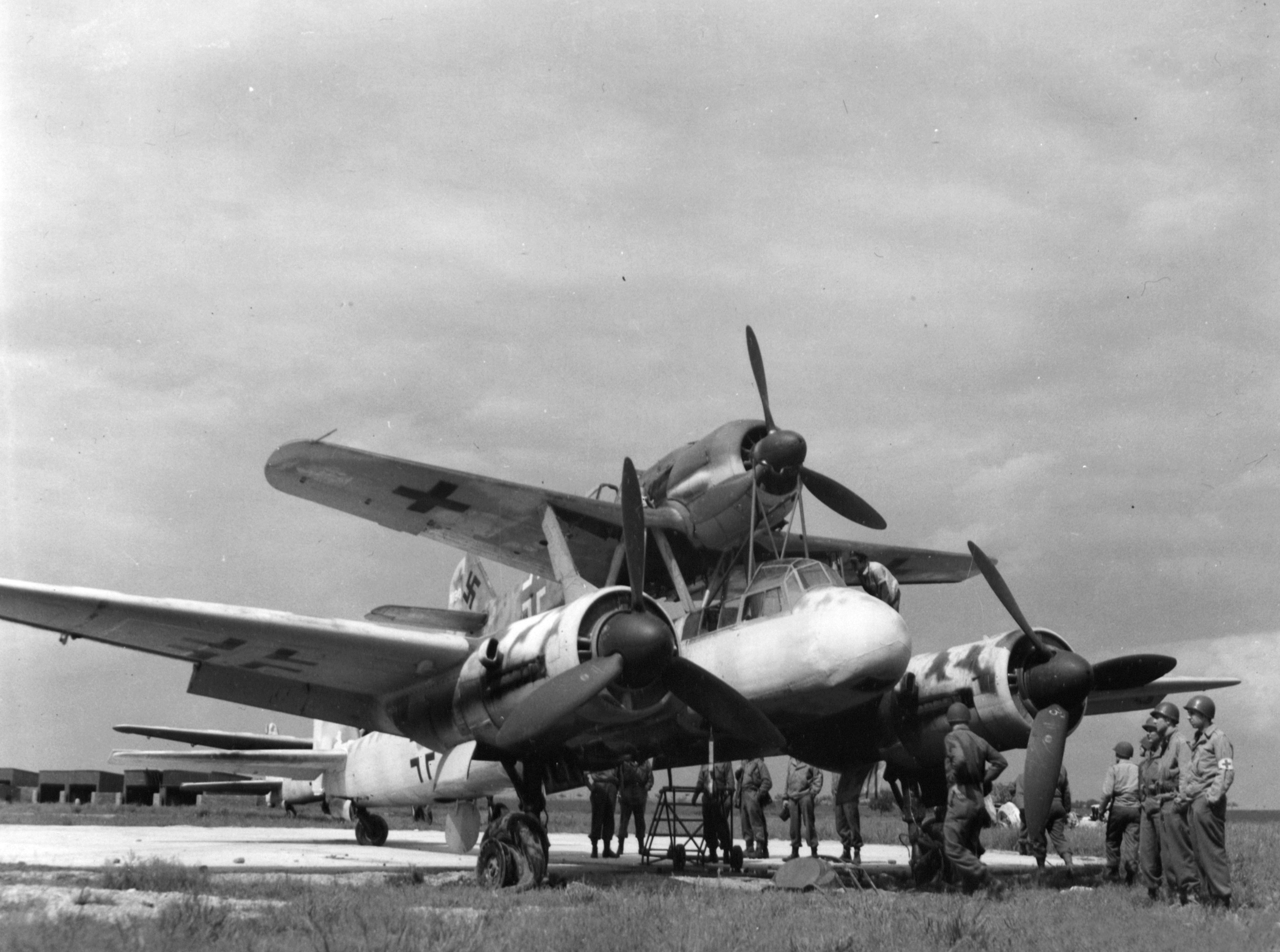|
Project Brass Ring
Project Brass Ring was a 1950 United States Air Force project designed to deliver an early hydrogen bomb to within of a target using a drone version of the B-47 Stratojet, which would be guided by a mother ship and destroyed in the detonation. This project was given considerable support, due to uncertainty concerning the possible yield of a hydrogen bomb, then estimated to lie between 10 and 40 megatons. Brass Ring was meant to provide an interim nuclear weapons delivery capability while more capable (and less costly) systems were under development. The fear and concern surrounding the Soviet Union's development of its own nuclear weapons capability was the impetus to quickly begin the project. Project Brass Ring was similar in concept to the World War II Operation Aphrodite. See also * Composite aircraft * Mistel ''Mistel'' (German for "mistletoe", a parasitic plant) was the larger, unmanned component of a composite aircraft configuration developed in Germany during the la ... [...More Info...] [...Related Items...] OR: [Wikipedia] [Google] [Baidu] |
United States Air Force
The United States Air Force (USAF) is the air service branch of the United States Armed Forces, and is one of the eight uniformed services of the United States. Originally created on 1 August 1907, as a part of the United States Army Signal Corps, the USAF was established as a separate branch of the United States Armed Forces in 1947 with the enactment of the National Security Act of 1947. It is the second youngest branch of the United States Armed Forces and the fourth in order of precedence. The United States Air Force articulates its core missions as air supremacy, global integrated intelligence, surveillance and reconnaissance, rapid global mobility, global strike, and command and control. The United States Air Force is a military service branch organized within the Department of the Air Force, one of the three military departments of the Department of Defense. The Air Force through the Department of the Air Force is headed by the civilian Secretary of the Air Force ... [...More Info...] [...Related Items...] OR: [Wikipedia] [Google] [Baidu] |
Hydrogen Bomb
A thermonuclear weapon, fusion weapon or hydrogen bomb (H bomb) is a second-generation nuclear weapon design. Its greater sophistication affords it vastly greater destructive power than first-generation nuclear bombs, a more compact size, a lower mass, or a combination of these benefits. Characteristics of nuclear fusion reactions make possible the use of non-fissile depleted uranium as the weapon's main fuel, thus allowing more efficient use of scarce fissile material such as uranium-235 () or plutonium-239 (). The Ivy Mike, first full-scale thermonuclear test was carried out by the United States in 1952; the concept has since been employed by most of the world's List of states with nuclear weapons, nuclear powers in the design of their weapons. Modern fusion weapons consist essentially of two main components: a nuclear fission primary stage (fueled by or ) and a separate nuclear fusion secondary stage containing thermonuclear fuel: the heavy hydrogen isotopes deuterium and tri ... [...More Info...] [...Related Items...] OR: [Wikipedia] [Google] [Baidu] |
B-47 Stratojet
The Boeing B-47 Stratojet (Boeing company designation Model 450) is a retired American long-range, six-engined, turbojet-powered strategic bomber designed to fly at high subsonic speed and at high altitude to avoid enemy interceptor aircraft. The primary mission of the B-47 was as a nuclear bomber capable of striking targets within the Soviet Union. Development of the B-47 can be traced back to a requirement expressed by the United States Army Air Forces (USAAF) in 1943 for a reconnaissance bomber that harnessed newly developed jet propulsion. Another key innovation adopted during the development process was the swept wing, drawing upon captured German research. With its engines carried in nacelles underneath the wing, the B-47 represented a major innovation in post-World War II combat jet design, and contributed to the development of modern jet airliners. Suitably impressed, in April 1946, the USAAF ordered two prototypes, designated "XB-47"; on 17 December 1947, the first ... [...More Info...] [...Related Items...] OR: [Wikipedia] [Google] [Baidu] |
Mother Ship
A mother ship, mothership or mother-ship is a large vehicle that leads, serves, or carries other smaller vehicles. A mother ship may be a maritime ship, aircraft, or spacecraft. Examples include bombers converted to carry experimental aircraft to altitudes where they can conduct their research (such as the B-52 carrying the X-15), or ships that carry small submarines to an area of ocean to be explored (such as the Atlantis II carrying the Alvin). A mother ship may also be used to recover smaller craft, or go its own way after releasing them. A smaller vessel serving or caring for ''larger'' craft is usually called a tender. Etymology In many Asian languages, such as Chinese, Japanese, Korean and Indonesian, the word ''mothership'' (, ja, 母艦, ko, 모함, id, Kapal induk, literally "mother" + "(war)ship") typically refers to an aircraft carrier, which is translated as "aircraft/aviation mothership" (, ja, 航空母艦, ko, 항공모함, ms, Kapal induk pesawa ... [...More Info...] [...Related Items...] OR: [Wikipedia] [Google] [Baidu] |
Megatons
TNT equivalent is a convention for expressing energy, typically used to describe the energy released in an explosion. The is a unit of energy defined by that convention to be , which is the approximate energy released in the detonation of a metric ton (1,000 kilograms) of TNT. In other words, for each gram of TNT exploded, (or 4184 joules) of energy is released. This convention intends to compare the destructiveness of an event with that of conventional explosive materials, of which TNT is a typical example, although other conventional explosives such as dynamite contain more energy. Kiloton and megaton The "kiloton (of TNT)" is a unit of energy equal to 4.184 terajoules (). The "megaton (of TNT)" is a unit of energy equal to 4.184 petajoules (). The kiloton and megaton of TNT have traditionally been used to describe the energy output, and hence the destructive power, of a nuclear weapon. The TNT equivalent appears in various nuclear weapon control treaties, and has ... [...More Info...] [...Related Items...] OR: [Wikipedia] [Google] [Baidu] |
Nuclear Weapon
A nuclear weapon is an explosive device that derives its destructive force from nuclear reactions, either fission (fission bomb) or a combination of fission and fusion reactions ( thermonuclear bomb), producing a nuclear explosion. Both bomb types release large quantities of energy from relatively small amounts of matter. The first test of a fission ("atomic") bomb released an amount of energy approximately equal to . The first thermonuclear ("hydrogen") bomb test released energy approximately equal to . Nuclear bombs have had yields between 10 tons TNT (the W54) and 50 megatons for the Tsar Bomba (see TNT equivalent). A thermonuclear weapon weighing as little as can release energy equal to more than . A nuclear device no larger than a conventional bomb can devastate an entire city by blast, fire, and radiation. Since they are weapons of mass destruction, the proliferation of nuclear weapons is a focus of international relations policy. Nuclear weapons have been d ... [...More Info...] [...Related Items...] OR: [Wikipedia] [Google] [Baidu] |
Soviet Union
The Soviet Union,. officially the Union of Soviet Socialist Republics. (USSR),. was a transcontinental country that spanned much of Eurasia from 1922 to 1991. A flagship communist state, it was nominally a federal union of fifteen national republics; in practice, both its government and its economy were highly centralized until its final years. It was a one-party state governed by the Communist Party of the Soviet Union, with the city of Moscow serving as its capital as well as that of its largest and most populous republic: the Russian SFSR. Other major cities included Leningrad (Russian SFSR), Kiev (Ukrainian SSR), Minsk ( Byelorussian SSR), Tashkent (Uzbek SSR), Alma-Ata (Kazakh SSR), and Novosibirsk (Russian SFSR). It was the largest country in the world, covering over and spanning eleven time zones. The country's roots lay in the October Revolution of 1917, when the Bolsheviks, under the leadership of Vladimir Lenin, overthrew the Russian Provisional Government ... [...More Info...] [...Related Items...] OR: [Wikipedia] [Google] [Baidu] |
Operation Aphrodite
Aphrodite and Anvil were the World War II code names of United States Army Air Forces and United States Navy operations to use Boeing B-17 Flying Fortress and Consolidated PB4Y bombers as precision-guided munitions against bunkers and other hardened/reinforced enemy facilities, such as "Crossbow" operations against German long range missiles. The missions were not generally successful, and the intended targets in Europe were either overrun by the ground advance of Allied troops or disabled by conventional attacks by aircraft. Proposal The plan called for B-17E/Fs that had been taken out of operational service (various nicknames existed such as "robot", "baby", "drone" or "weary Willy") to be loaded to capacity with explosives, and flown by radio control into bomb-resistant fortifications such as German U-boat pens and V-weapon sites. By late 1943, General Henry H. Arnold had directed Brigadier General Grandison Gardner's electronic engineers at Eglin Field, Florida, to outfit ... [...More Info...] [...Related Items...] OR: [Wikipedia] [Google] [Baidu] |
Composite Aircraft
A composite aircraft is made up of multiple ''component'' craft. It takes off and flies initially as a single aircraft, with the components able to separate in flight and continue as independent aircraft.Harper (1937) Typically the larger aircraft acts as a ''carrier aircraft'' or ''mother ship'', with the smaller sometimes called a ''parasite'' or ''jockey'' craft. The first composite aircraft flew in 1916, during World War I, when the British launched a Bristol Scout from a Felixstowe Porte Baby flying boat. Between the World Wars, American experiments with airship/biplane composites led to the construction of two airborne aircraft carriers, while the British Short Mayo seaplane composite demonstrated successful transatlantic mail delivery. During the Second World War some composites saw operational use including the Mistel ("mistletoe"), the larger unmanned component of a composite aircraft configuration developed in Germany during the later stages of World War II, in effect a ... [...More Info...] [...Related Items...] OR: [Wikipedia] [Google] [Baidu] |
Mistel
''Mistel'' (German for "mistletoe", a parasitic plant) was the larger, unmanned component of a composite aircraft configuration developed in Germany during the later stages of World War II. The composite comprised a small piloted control aircraft mounted above a large explosives-carrying drone, the Mistel, and as a whole was referred to as the ''Huckepack'' ("Piggyback"), also known as the ''Beethoven-Gerät'' ("Beethoven Device") or ''Vati und Sohn'' ("Daddy and Son"). The most successful of these used a modified Junkers Ju 88 bomber as the ''Mistel'', with the entire nose-located crew compartment replaced by a specially designed nose filled with a large load of explosives, formed into a shaped charge. The upper component was a fighter aircraft, joined to the Mistel by struts. The combination would be flown to its target by a pilot in the fighter; then the unmanned bomber was released to hit its target and explode, leaving the fighter free to return to base. The first such com ... [...More Info...] [...Related Items...] OR: [Wikipedia] [Google] [Baidu] |






